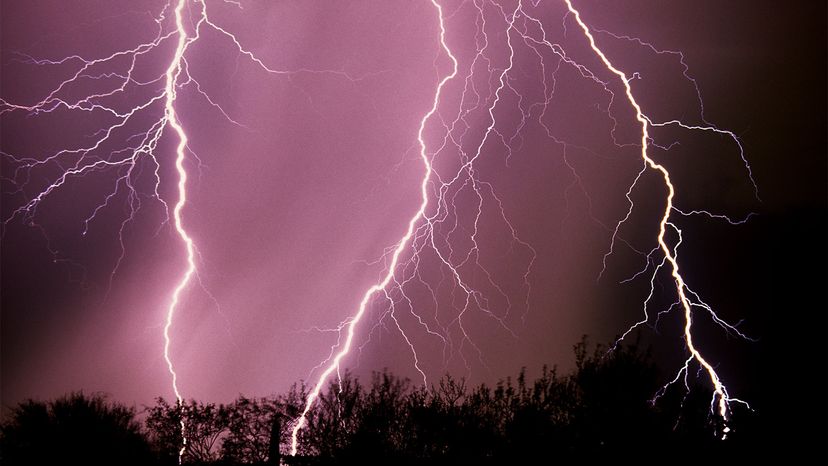Lightning in 275 Words or Fewer

Sometimes it's helpful to do a little recap, especially when you're learning about a phenomenon as complex as lightning. In that vein, here's our quick explanation of cloud-to-ground lightning strikes.
On Earth, lightning begins with the water cycle. As the sun heats the planet, moisture heads for the skies in the form of vapor. Given enough moisture, a cloud will form.
Advertisement
Thanks to updrafts, downdrafts, freezing and particle collisions, storm clouds become positively charged at the top and negatively charged at the bottom.
This separation of charges goes hand in hand with an electric field. As the charge separation grows stronger, so does the associated electric field.
Eventually, an intense electric field can cause the air around the cloud to "break down," or become ionized, allowing current to flow through the ionized air (or plasma) and potentially neutralize the charge separation. The path of ionized air is called a stepped leader.
Meanwhile, the positive charge is getting bigger on Earth's surface below, and objects (including people) respond locally to this strong electric field by sending out positive streamers.
When a streamer and a stepped leader meet, they can form a complete path for lightning to travel from the cloud to the ground (other types of lightning follow a slightly different process). After this fateful meeting, the lightning strike occurs.
Lastly, the air around the strike heats up and expands so much that it causes a shockwave in the form of a sound wave to radiate away from the strike path. That's thunder.